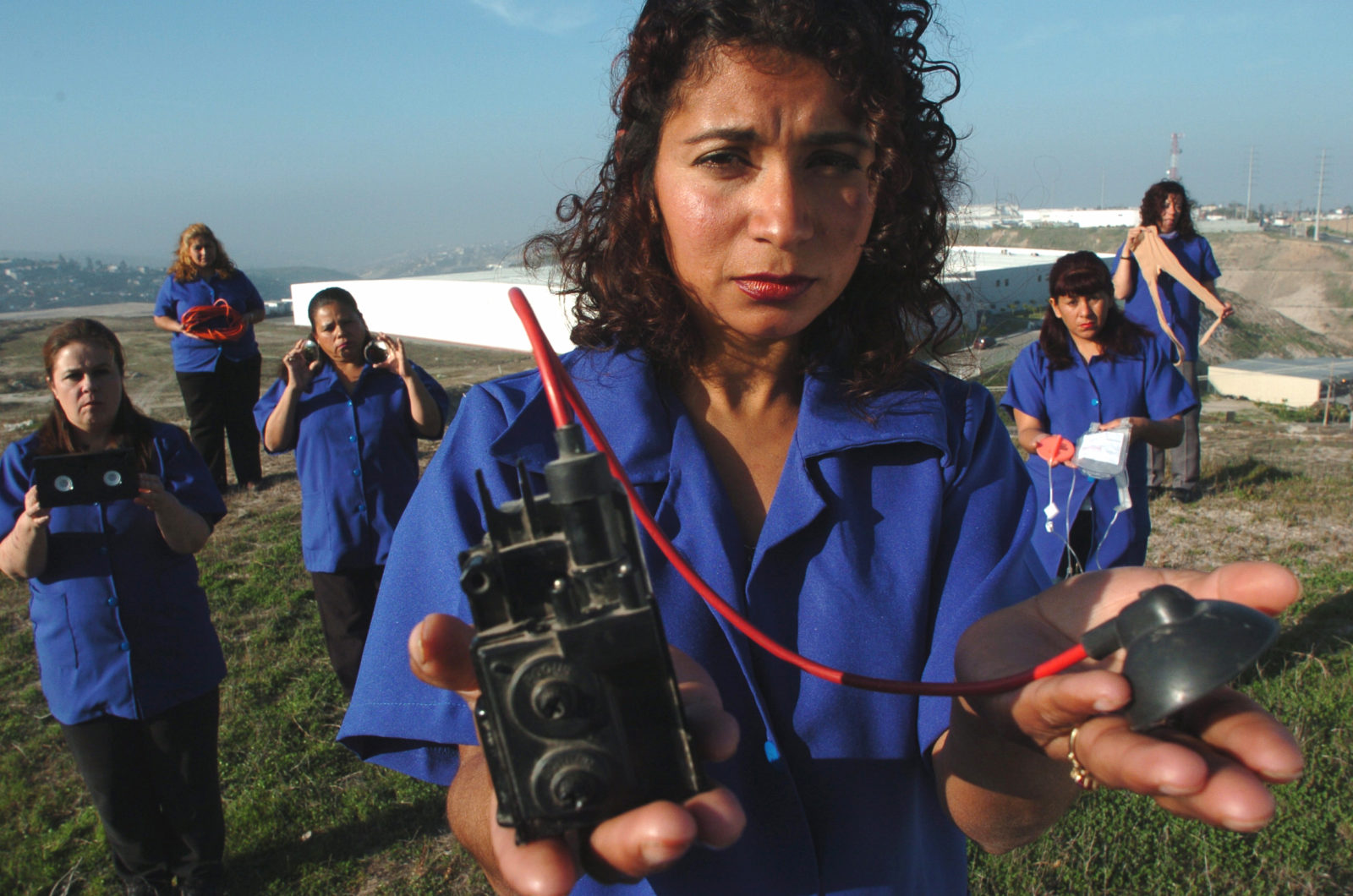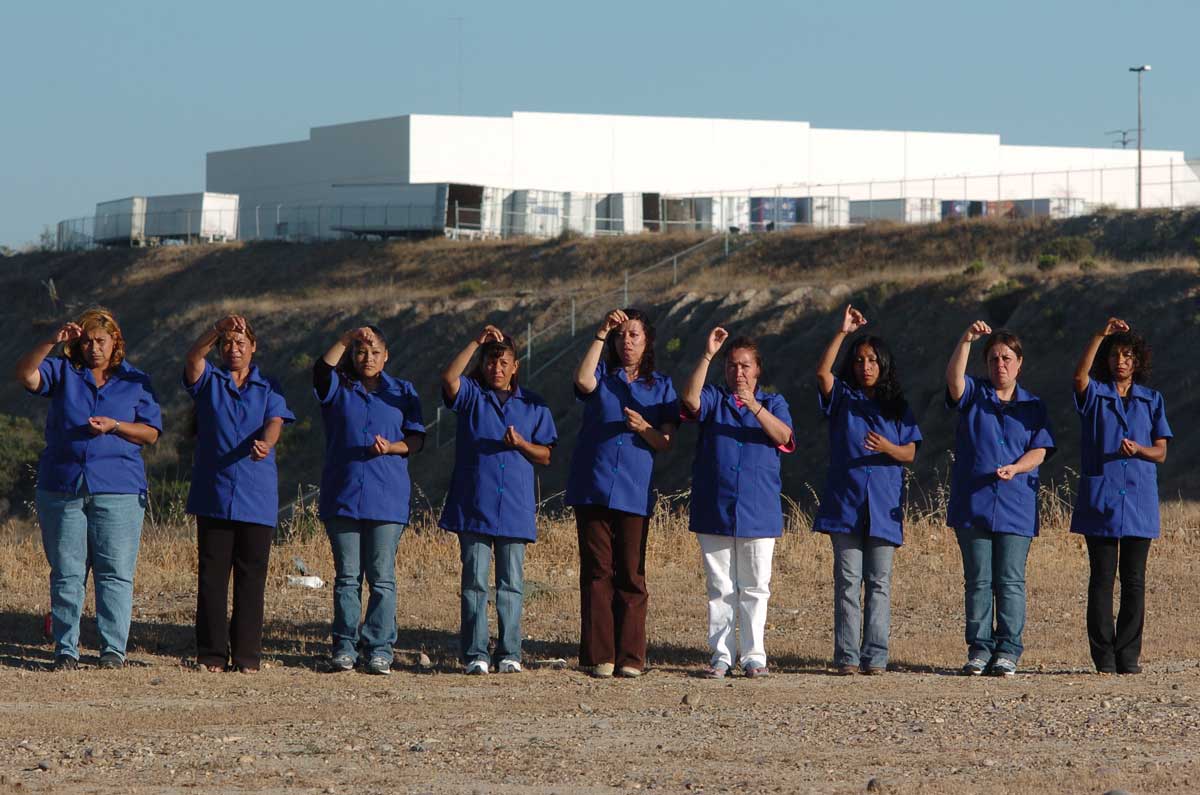How Maquilápolis Led the Way As Documentaries Became Important Tools for Justice and Change

As Creative Capital celebrates its 20th anniversary, we are looking back at some of the 561 projects supported over the past two decades—including film, visual art, performance, literature, technology, social practice, and everything in between. In each piece, artists reflect on their projects and their insights, struggles, accomplishments, and how Creative Capital helped shape their practice.
Documentaries play a key role in exposing complex, nuanced stories involving injustice and corruption. In the early 2000s, Vicky Funari and Sergio de la Torre found themselves at the vanguard of a new wave of filmmakers that used the documentary medium as a way to galvanize support for a range of issues, from environmental justice to women’s rights. In 2001, the artists received the Creative Capital Award to make Maquilápolis, a documentary about women workers in foreign-owned factories, known as maquiladoras, who were confronting their employers about labor violations, environmental devastation, and urban chaos. Beyond telling this story, Funari and De La Torre sought to merge filmmaking with community development by collaborating with the women, who were themselves community organizers fighting to improve their situations. The main characters in the film were involved in every stage of production, including planning, shooting, scripting, and outreach—using filmmaking to create a community engagement strategy, mobilize partners and organizations, and precipitate results. It was a revolutionary use of the medium, one that has become a best practice in the field today.
“What we were doing was groundbreaking,” Funari told us over the phone recently, “but it was also part of a change that was sweeping through the documentary world—both at the level of filmmakers who really wanted to use their films differently, and of funders who were realizing that films were not being as effective in the world as they could be.” Funari suggested that the important part of the process was developing a strategy to give the people featured in the film “a voice in how that film looks, sounds, what it covers, and how it gets used.”
The artists began collaborating after De La Torre showed one of Funari’s earlier films to a group of women known as Grupo Factor X, activists who were training factory workers in reproductive health, environmental justice, and labor rights. “We wanted to figure out a way to make a film that would serve Grupo Factor X in the work they were doing, but we also wanted it to be something that would be useful to these really dynamic women who were living lives of struggle as maquiladora workers.” They ended up making a film that would highlight the workers’ struggle, and give them more agency in the process.
“It can be a really expensive endeavor to bring everyone together. Creative Capital was fantastic for our project throughout, and that was a key moment.” — Vicky Funari
It took about three years to even begin the filmmaking work. During their research phase, the artists and Grupo Factor X decided that the best way to accomplish their shared goals was to incorporate the filmmaking process into Factor X’s pre-existing workshop process. Just as the Factor X workshops trained women to be promotoras—community leaders with specialized training—the filmmakers would lead video workshops for factory workers, teaching them how to use cameras and film their own lives. This workshop model was used throughout production, extending to workshops in writing narratives, rough cut feedback meetings, editing, and finally planning an engagement campaign. Through this process, the artists could “work in a collaborative way with the workers to come up with the themes and imagery of the film.”
Funari and De La Torre were able to tell their story in a way that addressed labor rights, environmental justice, fair trade, and women’s rights. “For women workers in the maquiladoras, all of the issues are intertwined together,” said Funari, “you can’t deal with one without dealing with the others as well.”
By around 2006, Funari and De La Torre had their film, and were ready to plan strategies to use it as a tool that could help galvanize support for the factory workers and promotoras. The team had partnered with many organizations working with different issues addressed in the film. For instance, because one character had to deal with a departing factory owner’s creation of a major toxic waste site along the border, Environmental Health Coalition in San Diego became a key partner on the engagement campaign of the project. Once the film was complete, the filmmakers gathered their partner organizations, a group of the promotoras, and key advisors together in a two-day stakeholders’ meeting to envision and plan a binational community engagement campaign.

Image of the promotoras.
Because of the way the Creative Capital Award works—supplying artists with funding at key moments—Funari and De La Torre went back to Creative Capital to request support for this stakeholder meeting. Referring to Creative Capital’s founding director, Funari explained, “Ruby Lerner was really visionary as one of the early funders to realize that if filmmakers were going to be able to build serious engagement campaigns, then they had to do these kinds of stakeholder summits to build them. That doesn’t happen with zero dollars. It can be a really expensive endeavor to bring everyone together. Creative Capital was fantastic for our project throughout, and that was a key moment.”
Lerner understood that Funari and her collaborators were trying to make more than just a documentary. “I would try to explain what I wanted to do to other funders and they wouldn’t understand.” When it was time to show the work at film festivals, Funari believed it was important to bring the women from the film to talk about the project, rather than just the directors. “I wanted to use the festivals as a way to promote the activism that these women were doing. Ruby was one of the only funders who initially understood that being able to pay for a plane ticket for a factory worker in Tijuana to go to Barcelona or Denmark to speak about her life experience was an element of engagement. That, in and of itself, had a politics to it.”
The film had a successful run at festivals around the world, and it ended up premiering on POV on PBS, where excerpts are still viewable. It had tangible results in the real world as well, Funari explained. For example, one of their partners, SweatFree Communities, had been campaigning to get local governments and college and university administrators to commit to purchasing sweat free goods. “Liana Foxvog, at the time their National Organizer, told me that after one of their Maquilápolis screenings, a local politician came up to her and said that seeing the film had finally shown him exactly why he needed to support their initiative. That’s an anecdote that I hear as a filmmaker and I feel like I did my job.”
“What a film can do is often no more than create or promote dialogue,” said Funari. As filmmakers, the artists wanted to make sure their audience used the film properly. They put resources toward making a binational and bilingual database of all the organizations leading the charge around issues addressed in the film. As Funari pointed out, information today is easily accessible with a quick internet search, but this was not true even a decade ago, especially for communities where computers and internet access were not common. So, a printed database became a valuable asset to give to their audience after seeing the film. They also created a bilingual discussion guide to help activists and community leaders use the film to help them organize. “When people see a film like Maquilàpolis,” Funari explained, they ask, “What can I do? What should I do?” The team used these resources as a way to give the viewers an immediate action they could take: “Get involved with any one of these organizations and you will be making a positive change in the world.”
Maquilápolis and documentary films like it represent a major shift in how people have come to view documentary as an art form in the past fifteen years. “2006 isn’t that long ago,” Funari points out, “to think that what you can do now—given the technology that we have, and the awareness that people have in the documentary film world—it’s quantum leaps ahead of where we were in 2006.”
